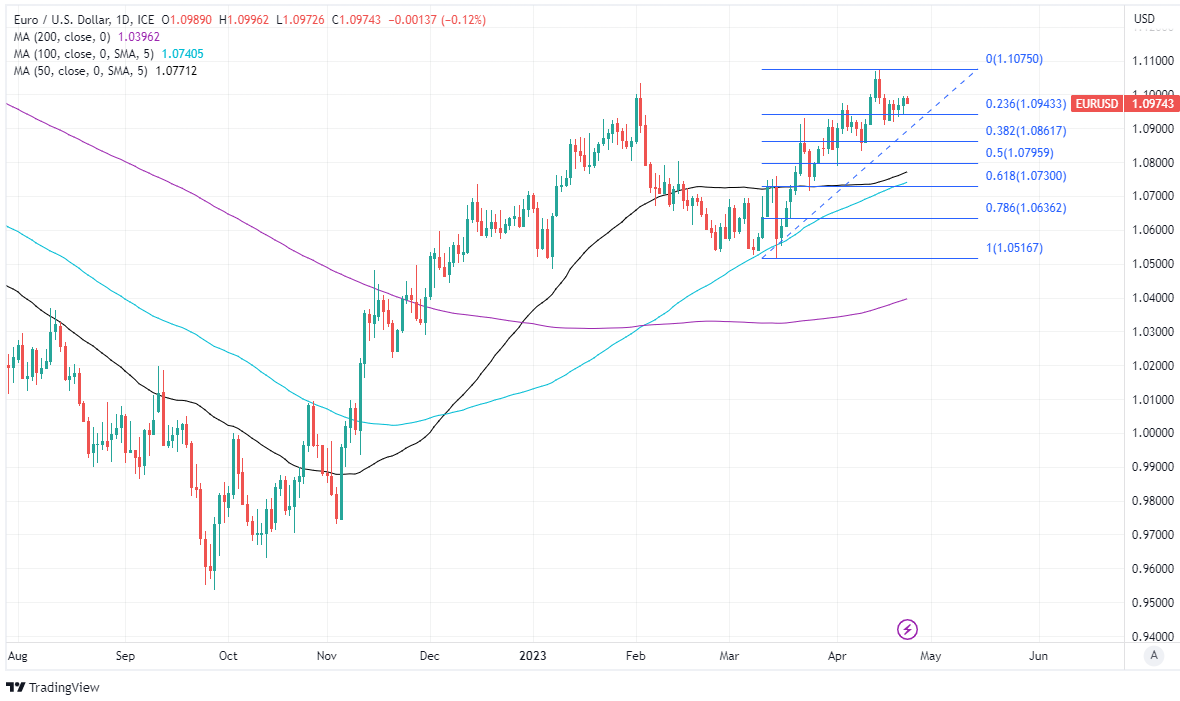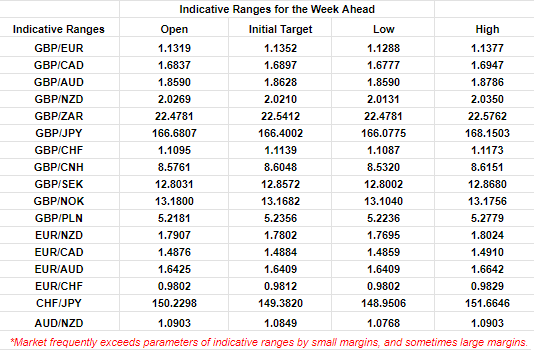EUR/USD Week Ahead Forecast: Helped by Debt Risk and Data
- Written by: James Skinner
- EUR/USD supported above 1.09 with upside risk
- Resilient economy helps but key data risk looms
- Moderating outlook for Fed rates also supportive
- Rising risk around U.S. debt limit may lift further

Image © European Central Bank
The Euro to Dollar exchange rate has held onto the bulk of its April gains in recent trade but could further them this week if congressional drama related to the U.S. debt ceiling topples the greenback or if European Central Bank (ECB) policymakers receive a hawkish shock from the local economic data.
Europe's single currency was one of the better performers last week after holding firm in the face of a rebounding Dollar including on Friday when S&P Global PMI surveys of the manufacturing and services sectors offered further signs of resilience in the continental economy.
Dips have been shallow and short-lived, keeping the early March uptrend intact on the charts, while there is a good number of prospective catalysts for an extension of the recovery sitting in the calendar for the week ahead including a full slate of U.S. and European economic figures.
"The pair is currently testing the top of this year’s trading range between 1.0500 and 1.1000. We expect the pair to break out to the upside and move back closer to pre-Ukraine conflict levels," says Lee Hardman, a currency analyst at MUFG.
"The resilience of the euro-zone economy keeps pressure on the ECB to tighten policy further. ECB officials have left the door open to another larger 50bps hike next month," Hardman and colleagues write in a Friday research briefing.
 Euro to Dollar rate shown at daily intervals with Fibonacci retracements of March rally and selected moving averages indicating possible areas of technical support for the single currency.
Euro to Dollar rate shown at daily intervals with Fibonacci retracements of March rally and selected moving averages indicating possible areas of technical support for the single currency.
MUFG tipped the Euro as a buy last Friday citing an anticipated May ending to the Federal Reserve (Fed) interest rate cycle and a brighter outlook for economies in U.S. and Europe, which is seen leading the single currency back to 1.1350 during the weeks or months ahead.
This idea and rationale could be partially vindicated as soon as this week, however, if either of Friday's German inflation figures for March or first-quarter GDP data for the Euro Area delivers a hawkish shock for ECB policymakers who've recently pegged the interest rate outlook to incoming data outcomes.
"The surprising strength in the Eurozone PMIs in recent months suggest the Eurozone economy expanded stronger than the consensus estimate of 0.2%/qtr in Q1 2023. So EUR may finish the week on a high," says Joseph Capurso, head of international economics at Commonwealth Bank of Australia.
"AUD/EUR could test 0.60 [EUR/AUD: 1.6666] for the first time since October 2020. We consider the deteriorating global economy will weigh on commodity prices and AUD/EUR. In addition, the spread to European interest rates could also weigh on AUD/EUR," Capurso writes in a Monday research briefing.
Meanwhile, the trajectory of the Dollar will also be an important influence and there is no shortage of prospective catalysts for driving it one way or the other.
Above: Quantitative model estimates of trading ranges for selected pairs this week. Source Pound Sterling Live. (If you are looking to protect or boost your international payment budget you could consider securing today's rate for use in the future, or set an order for your ideal rate when it is achieved, more information can be found here.)
The highlights of the U.S. calendar this week include Thursday's release of first-quarter GDP figures, as well as Friday's publication of the Employment Cost Index and Core Personal Consumption Expenditures Price Index for the same period.
All of these numbers will be crucial for determining whether the Federal Reserve (Fed) will lift its interest rate further in the months ahead after raising its benchmark for borrowing costs to 5% last month while leaving forecasts for only one or two more increases this year unchanged.
However, much more important for the greenback may well be whether or not there is any pre-emptive selling of the Dollar so as to hedge the risks associated with uncertainty over how much longer the U.S. government can continue to pay its bills for without raising the statutory debt limit.
"Republicans have offered to raise or suspend the debt limit in exchange for spending cuts. President Biden is not impressed. A resolution is needed soon. Financial markets are starting to show signs of stress," says Tom Kenny, an economist at ANZ.
"Data this week should show how resilient the economy was in Q1 2023, while March PCE core inflation and Q1 2023 ECI data will be a reminder of the Fed’s inflation problem," Kenny and colleagues write in a Monday research briefing.





